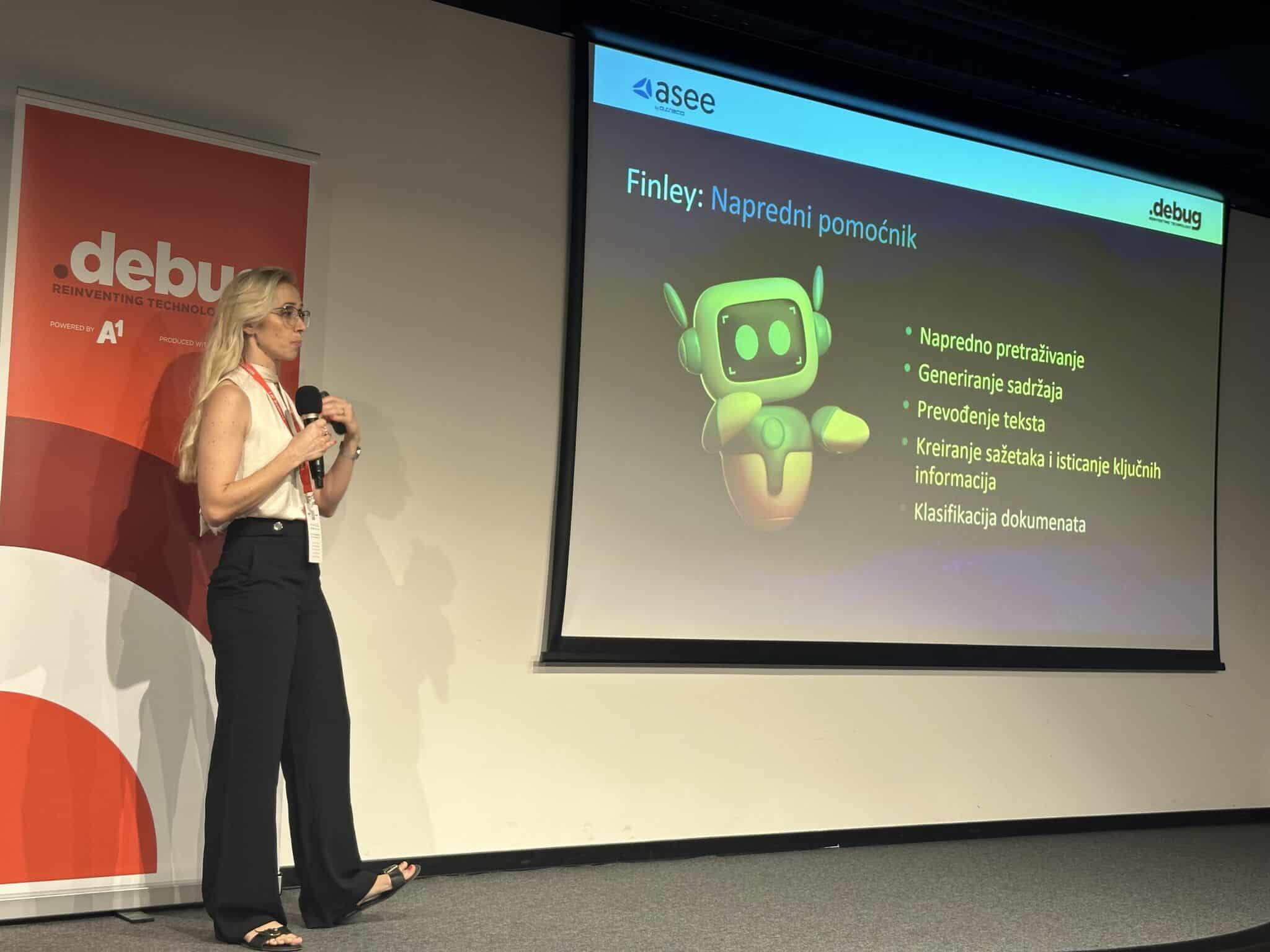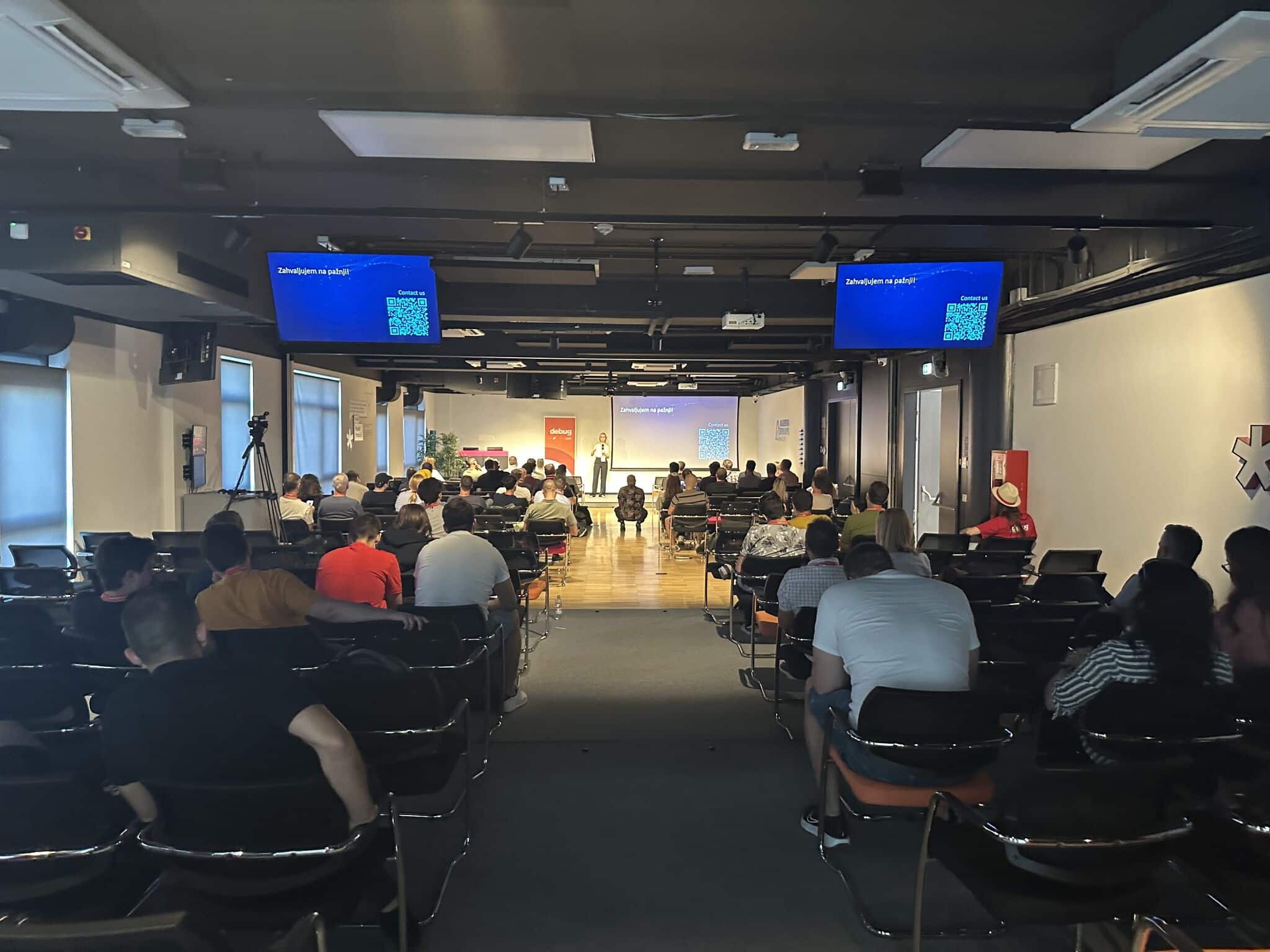At this year’s .debug conference in Zagreb, as a Lead Software Developer at ASEE, I had an opportunity to deliver a grounded and insightful talk on a topic that quietly affects nearly every business: documents.
Specifically, I focused on how organizations can begin to unlock the hidden value stored in documents using AI, particularly Retrieval-Augmented Generation (RAG) within document management systems (DMS).
While much of today’s AI narrative centers on flashy applications, I stayed close to real-world challenges, where documents remain essential to daily business operations, especially in regulated industries like banking and insurance.

Documents Aren’t Going Anywhere — But They Could Work Smarter
Here’s a truth that’s easy to overlook: many organizations have digitized their documentation, but without an intelligent way to understand and interpret the written information, real value can be easily missed out.
Documents are everywhere — from client applications and contracts to scanned archives and internal procedures — and they’re still the dominant format in many sectors.
But not all documents are created equally. Many of documents contain little structure or usable metadata, and some are just scanned images of paper. Extracting useful information from such documentation is extremely difficult for humans – only AI makes this truly achievable.
AI Can Help — If You Set It Up Right
Large Language Models (LLM-s) and Retrieval-Augmented Generation (RAG) can be used to make document systems smarter. Rather than making major changes or introducing entirely new applications – which often requires significant time, money and effort – there should be a bigger emphasis on the value of layering AI on top of existing systems. That final layer is a small change that drives major value.
Thanks to RAG, an employee can ask a specific question and receive a highly relevant answer — along with the exact source documents and highlighted paragraphs the answer was derived from. This not only ensures transparency, but also makes it easy to verify and trust the information.
Real-World Scenarios: Banking, Legal, Support
Here are several practical use cases where AI-enhanced document systems bring value:
- In banking – AI can assist with repetitive tasks such as automatic data validation and support decision-making processes — for example evaluating loan applications
- In legal and compliance – AI can automate routine audits by checking whether all required documents are submitted, detecting expired files, and monitoring for real-time compliance risks — such as newly sanctioned individuals or suspicious transaction patterns in line with AML regulations.
- In customer service – employees can quickly find internal guidelines or answers based on thousands of documents, saving time and improving accuracy.
What ties all of these use cases together is that the AI is trained to understand the language and workflows specific to the industry — it’s not a one-size-fits-all solution.

Helping People Do Their Jobs — Not Replacing Them
AI should support people in their work, not replace them. By automating repetitive tasks — like time-consuming searches through large volumes of documentation and various validations that consume valuable time — employees are freed up to focus on more meaningful decisions and problem-solving.
And because these tools are integrated into the systems people already use, they can start benefiting from AI without changing how they work.
Scalable, Secure, and Built for the Enterprise
Implementing AI in complex, multilingual, and highly regulated environments is no small task. At ASEE, we build solutions that are ready for these challenges — scalable across departments and countries, compliant with data privacy regulations, and adaptable to local languages and document formats.
In short, these are AI solutions built with real enterprise needs in mind.
Looking Forward: Intelligence Inside Your DMS
Documents aren’t going away — but the way we work with them is changing. Companies that start embedding intelligence into their document systems today are laying the foundation for smarter workflows tomorrow.
Technologies like LLMs and RAG aren’t hypothetical anymore. They’re already proving useful — turning document chaos into clarity.
Final Thoughts
Innovation doesn’t always start with new technology — sometimes, it starts by rethinking what we already have. In this case, documents. With the right structure, the right tools, and the right mindset, even something as ordinary as a documents can become a valuable part of your AI journey.
Zrinka Gligo
Lead Software Developer at ASEE, specializing in AI-powered financial solutions. She focuses on streamlining document management and enhancing business workflows through intelligent automation and innovative system design.







